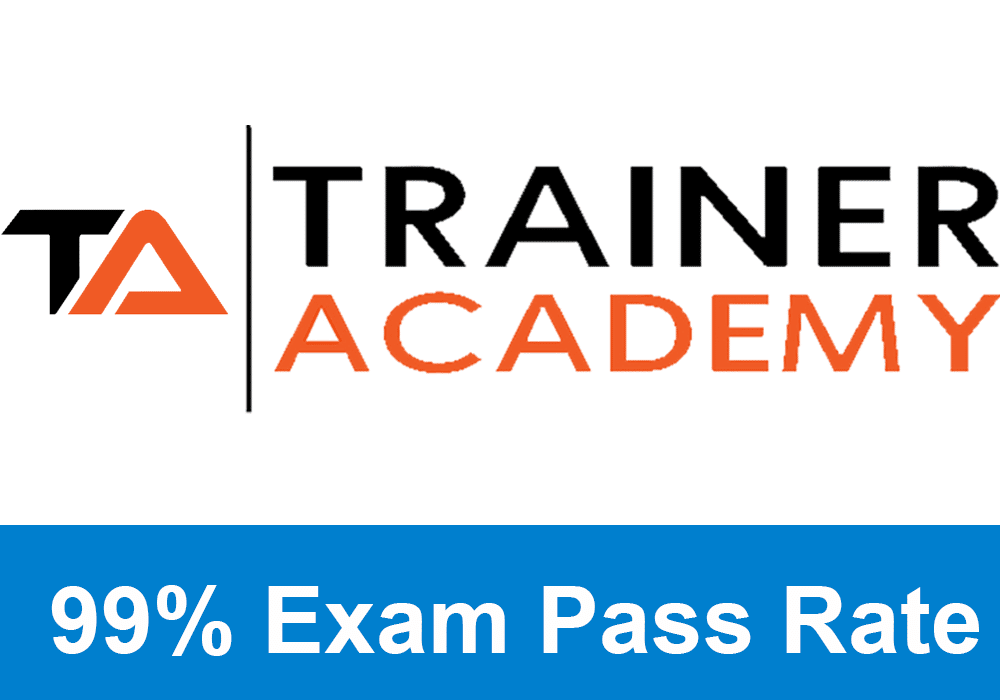
If you have not yet signed up for the NASM CES certification, receive a big discount here.
Get your copy of the NASM CES exam cheat sheet. It helps immensely for studying for the exam.
My PTP students report cutting their NASM CES study time and effort in half with Trainer Academy.
Benefit from the Exam Pass Guarantee and Retake Fee Guarantee. Plus, take advantage of my current discount code PTPJULY for 50% off the MVP Program (Ends July 16th, 2025).
Try it out for free here to see if it’s right for you, or read my detailed review for further insights.
Chapter Goals:
- Know the importance of achieving optimal levels of flexibility and range of motion in movements.
- Know the integrated function of the muscular, skeletal, and nervous systems and how they influence your flexibility and ability to move through the full intended range of motion.
- Find the common flexibility and joint range of motion assessments.
- Be able to talk about the performance of flexibility and range of motion assessments discussed in this chapter.
Introduction
Being able to move optimally will require good mobility, which will depend on a combination of different soft tissue flexibility and joint range of motion.
Flexibility is defined as the soft tissues’ normal extensibility that allows a full range of motion.
Mobility, on the other hand, is the entire range of motion available to the joints and the control of the neuromuscular system during motion in these joints.
The targeted mobility assessments should focus on and confirm the observations from the static and movement assessments preceding this chapter.
The factors affecting someone’s mobility will be posture, pattern overload, joint structures, age, pain, injuries, gender, and psychosocial influences.
The Mobility Assessment
These mobility assessments give the fitness professional some added insight into the client’s movement quality and the movement availability for their joints.
Exclusive PTP CPT Offers |
||
|---|---|---|
Most Popular Cert | Best Online NCCA Cert | Best Study Materials |
Gold Standard Cert | A Good Option | Best CPT for you?  |
A lot of the time, we see these restrictions of movement stemming from the overactive and shortened muscles or shortening of the soft tissues.
These assessments will be used to confirm impairments and if they are due to the muscles that were previously identified as overactive and helped to find the ones that will be underactive.
The professional must always have in their mind the idea that the body is one interdependent system.
When looking at the mobility of the kinetic chain, the regional interdependence model needs to be considered.
Mobility testing will look at the specific joint motions to determine dysfunctions.
The Scientific Rationale for Mobility Testing
The shortened soft tissues and contractile tissues can cause the presence of flexibility deficits.
This is very common in the active population and affects mobility greatly.
Upper Body Mobility Testing
In the cervical and thoracic regions, if the static assessment shows a distortion of posture and the movement assessment finds impairments in movement, then a mobility assessment needs to be done for the shoulders, head and neck, and cervicothoracic spine.
The flexion, extension, rotation, and side bending can be looked at by having the client actively move through reliable motions by a fitness professional.
Lower Body Mobility Testing
Shortened soft tissue or muscles in the LPHC, knee joint, and ankle will commonly be the causes of impairments found in the overhead squat.
Mobility assessment Procedures
While the static and movement assessments help us to find the muscles that are over or underactive, the mobility assessments will be used more for confirming and narrowing down those previous results.
Mobility restrictions are the inability to move a joint through what should be the full range of motion.
Exclusive PTP CPT Offers |
||
|---|---|---|
Most Popular Cert | Best Online NCCA Cert | Best Study Materials |
Gold Standard Cert | A Good Option | Best CPT for you?  |
When a client has restrictions in their mobility, it means they have overactive muscles and soft tissues on the opposite side of the observed restriction.
This is what reduces the joint’s ability to move.
An example of this could be seen in a client with some form of knee valgus in a movement assessment.
The hip adductors are found to be possibly overactive and shortened, and the opposite is true for the abductors.
The mobility assessment will then show restrictions in the pelvo-femoral abduction and confirm the overactivity of the adductors.
Ankle Screening
Clients that show their feet turning out, excessive levels of pronation, or excessive leaning forward in the overhead squat assessment will likely have some mobility restrictions shown in the foot and ankle complex.
Some additional testing on the ankle will find specific limitations that allow the fitness professional to create a more individualized program for lower body corrective exercise.
Make sure to look through the photos and the descriptions for the various movements and tests for mobility shown for this section in the chapter.
Knee Screening
When some static malalignments and movement impairments have been seen in the ankles, knees, and the LPHC, some knee mobility testing needs to be done.
Clients that have shown an anterior pelvic tilt, excessive leaning forward, or knee dominance when doing the overhead squat, some limitations of flexibility or range of motion for joints will be found.
Make sure to look through the photos and the descriptions for the various movements and tests for mobility shown for this section in the chapter.
Lumbo-Pelvic-Hip Complex Screening
If we have found static malalignments or movement impairments in the LPHC or the knee, then we should do mobility testing of the trunk.
Clients that show excessive anterior or posterior pelvic tilt, asymmetrical weight shifting, knee valgus, or excessive leaning forward in the overhead squat assessment may have these restrictions of the LPHC.
Mobility testing in the lumbar spine helps to narrow down limitations in the LPHC further.
This allows the professionals to create a more individualized program.
Make sure to look through the photos and the descriptions for the various movements and tests for mobility shown for this section in the chapter.
Shoulder-Elbow Screening
Movement impairments of the shoulder will often be due to some restricted mobility in the arm.
Shoulder-elbow mobility assessments should be done with the clients that show movement compensations in the shoulders and the head and neck kinetic checkpoints.
Clients may have mobility restrictions in the upper body if they show the arms falling forward when doing the overhead squat assessment.
Specific limitations may also be found when looking into the shoulder girdle, glenohumeral joint, elbow, and also wrist.
Make sure to look through the photos and the descriptions for the various movements and tests for mobility shown for this section in the chapter.
Cervico-Thoracic Mobility
If static malalignments are found in the hip, or movement compensations are seen in the shoulders or the head and neck, these assessments should be done next.
Clients with forward head postures, rounding of the shoulders, or the arms falling forward when doing the overhead squat, may all have these mobility restrictions revealed.
Make sure to look through the photos and the descriptions for the various movements and tests for mobility shown for this section in the chapter.

 Have a question?
Have a question? 



Tyler Read
PTPioneer Editorial Integrity
All content published on PTPioneer is checked and reviewed extensively by our staff of experienced personal trainers, nutrition coaches, and other Fitness Experts. This is to make sure that the content you are reading is fact-checked for accuracy, contains up-to-date information, and is relevant. We only add trustworthy citations that you can find at the bottom of each article. You can read more about our editorial integrity here.